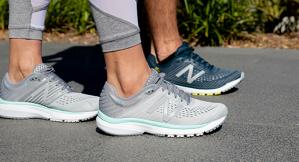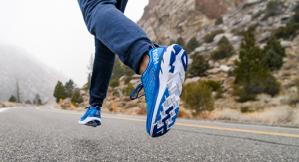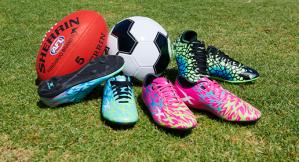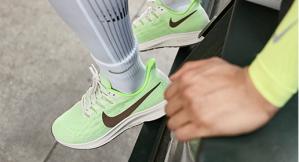MyFit
Our MyFit Blog aims to engage and inform so that we can collectively empower everyday athletes to better their best with every run.
Exercises for Runners
Australian Podiatrist and Educator, Talysha Reeve, a podiatrist from Adelaide works primarily in the field of exercise prescription for injury rehabilitation & sports performance; gives us the run down on the top 5 exercises runners should incorporate in to their weekly fitness or training regime.
When it comes to prescribing exercises for runners there are several combinations I have prescribed over the years. The variations depend on the individual and what the overall goal of the exercise program is, be it treating an injury or improving running performance.
The 5 exercises that have benefits across the board are;
Step-Up
Not only does the step up improve your gluteal, quadricep and hamstring strength, it can assist in improving your running mechanics via improved neuromuscular coordination.
Elevated Hamstring Bridge
When it comes to running up hills our glutes and hamstrings can let us down. This hamstring-focused posterior chain exercise can help improve the strength and endurance of the hamstrings (and gluteals). This will make tackling those uphill climbs and running at faster speeds that bit easier.
Calf Raise
Strong calf muscles are linked to a decrease in running related injuries, including; medial tibial stress syndrome (MTSS), tibial stress fractures and Achilles tendinopathy.
Here are a few variations to the humble calf raise:
- Multi-Directional Calf Raise: EMG studies show that varying the position of the foot increases the contractile activity of the tibialis posterior and peroneus longus muscles whilst performing the calf raise exercise.
- The Single-Leg Dynamic Calf Raise not only strengthens the calf muscles & Achilles tendon, but can also help improve posterior chain neuromuscular coordination, which is great for improving running performance.
Zig-Zag Hop
Hops are part of the plyometric family.
Plyometrics help improve muscle and tendon stiffness, which equates to a stronger and more efficient running style.
By performing the zig-zag hop as opposed to a stationary or linear hop, you are also training your proprioception, which helps with our landing mechanics and can decrease the risk of ankle sprains.
Toe Wave 1-5
The intrinsic muscles in the foot contribute a large % to the storage and release of energy of the lower limb. Meaning, they help the foot act like a spring.
Performing 1 x 30 second set of toe waves 3-5 times per week can help improve our foot strength, dexterity and overall comfort. The key to this exercise is performing it slow! (5-6 repetitions in 30 seconds will help you more than trying to perform 15-20 quick movements)
If you are looking to have this as a stand-alone workout performing 3-4 sets of 8-15 repetitions, once per week would be the general framework. However, if you are looking to improve your running and limit the impact of fatigue from these exercises you would work somewhere within 3-5 sets of 3-6 repetitions (10-15 repetitions for plyometrics), two to three times per week.
As with any training regime if you have a history of injury or are unsure if the exercises are right for you it is best to consult and experienced practitioner prior to commencing.
About Talysha Reeve
Based in Adelaide, Talysha is a Podiatrist and Educator with a focus in sports & musculoskeletal. She loves running, both trail and road. Her favourite shoes are the New Balance 1080.
Sports & Arthritis Clinic
- www.sparc.com.au
- www.facebook.com/SPARCesp
- @sparc_esp
Kinetic Therapies
- www.facebook.com/kinetictherapiesau
- @kinetictherapies_au








